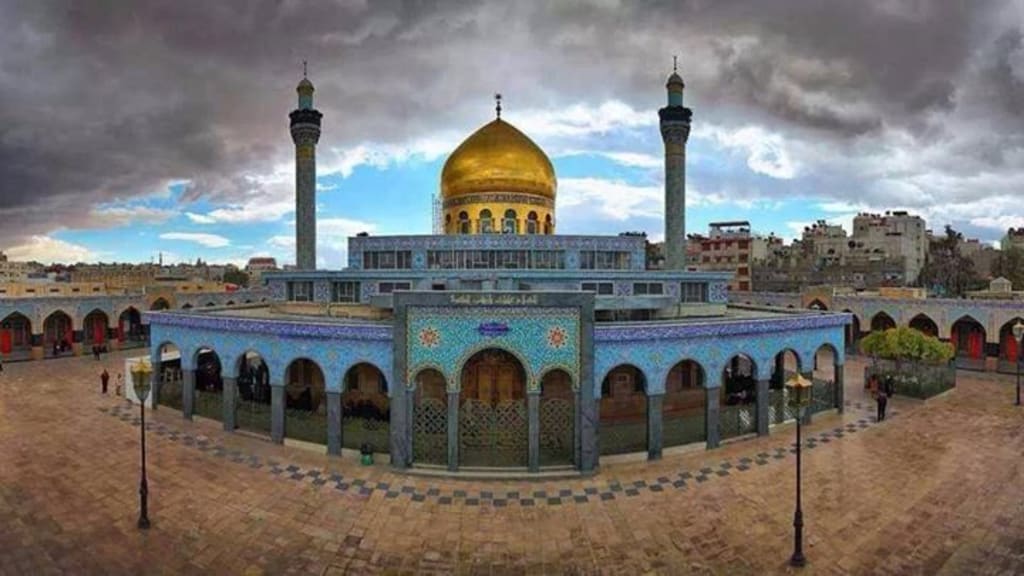
In the following series, I will try to thoroughly and in detail explore certain places on Earth. We don't have to walk 1000 kilometers to learn the history of places, so sit down, lean back, and let 1000 words take you on a journey through time.
Here is an overview of the history of Damascus, one of the world's oldest continuously inhabited cities:
Ancient History:
- Damascus, the capital of modern-day Syria, has a history that dates back over 4,000 years. It was founded around 2,000 BC and became a significant center for trade and culture. In the 2nd millennium BC, it was ruled by the Egyptians, followed by the Hittites and Arameans.
Roman and Byzantine Eras:
- Damascus came under Roman rule in the 1st century BC, and it became an important city in the Roman Empire. During this time, it was connected to the famous Silk Road trade route. The city became a center of early Christianity, and it is said that St. Paul had his conversion experience on the road to Damascus.
Islamic Period:
- In 634 AD, Damascus was conquered by the Rashidun Caliphate led by Khalid ibn al-Walid, marking its entry into the Islamic world. It played a central role in the early Islamic expansion and became the capital of the Umayyad Caliphate in 661 AD. Under Umayyad rule, Damascus became a center of architectural and cultural excellence, with the construction of the Umayyad Mosque. After the fall of the Umayyad Caliphate, it became part of various Islamic empires, including the Abbasids, Mamluks, and Ottomans.
Ottoman Rule:
- In the early 16th century, Damascus was incorporated into the Ottoman Empire. During the Ottoman era, it remained an important center of trade and culture.
Modern History:
- After World War I, Syria came under French control as a League of Nations mandate. Damascus became the capital of Syria after the country gained independence in 1946. In the mid-20th century, the city played a pivotal role in the development of modern Arab nationalism and was a center of political and cultural activity in the Arab world.
Contemporary Period:
- In 1971, Hafez al-Assad seized power in Syria and established the Assad family's rule, with Damascus as its center. Damascus faced significant challenges during the Syrian Civil War, which began in 2011. The city experienced significant violence and destruction, but the conflict has gradually subsided in certain areas.
Cultural Significance:
- Damascus has a rich cultural heritage, with its historic old city being designated a UNESCO World Heritage Site. The old city contains well-preserved architectural and cultural treasures. The Umayyad Mosque, an architectural masterpiece, is a significant religious and historical site. Damascus has been known for its traditional crafts, including the production of silk and brocade textiles. The city has a rich literary tradition, with numerous historical figures contributing to Arabic literature.
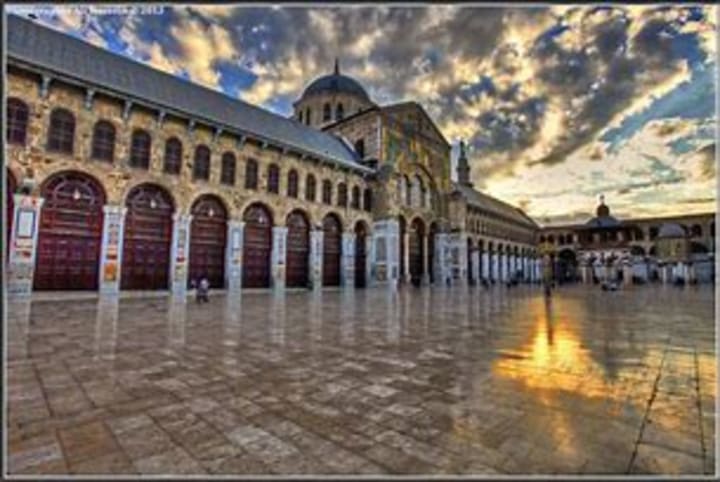
Current Status:
- Today, Damascus is the capital and largest city of Syria. It faces ongoing challenges, including post-war reconstruction, political instability, and a refugee crisis. The city remains a significant cultural and historical center, with a legacy that spans millennia. Please note that the situation in Damascus and Syria is complex, and this historical overview provides only a broad perspective on the city's history.
Biblical Prophecy's involving city of Damascus?
There is a well-known prophecy involving Damascus, which is often referenced in religious and eschatological contexts. It comes from the Bible, particularly in the Old Testament. The prophecy concerning Damascus is found in the Book of Isaiah, in the Hebrew Bible's prophetic writings. It is important to note that interpretations of this prophecy may vary among different religious traditions and scholars. The specific prophecy is found in Isaiah 17:1 (New International Version):
"See, Damascus will no longer be a city but will become a heap of ruins."
This prophecy is often cited in discussions of eschatology, the study of end times, and apocalyptic beliefs. It is also connected with other prophecies, including events leading up to the "Day of the Lord." Some interpretations suggest that this prophecy relates to a future event in which Damascus would be destroyed or undergo significant upheaval. However, interpretations vary greatly, and not all religious or scholarly perspectives agree on the timing, nature, or significance of this prophecy. It's important to understand that religious prophecies are subject to diverse interpretations, and they are often influenced by the religious beliefs and perspectives of those who study them. As a result, interpretations of the prophecy involving Damascus can differ widely depending on one's faith and the specific religious tradition to which they belong.
Islamic reference's:
In Islamic eschatology, there are various prophecies and traditions related to the city of Damascus, some of which are found in the Hadith literature. These prophecies are often associated with the end times and events leading up to the Day of Judgment. It's important to note that interpretations of these prophetic traditions can vary among different Islamic scholars and traditions. Here are a few notable Islamic prophecies related to Damascus:
1. Conquest of Constantinople (Istanbul):** One prominent hadith is attributed to the Prophet Muhammad, which predicts the eventual conquest of Constantinople (Istanbul) by the Muslims. In some interpretations, this is linked to the end times. After the conquest of Constantinople, there are references to a great battle and the return of Jesus (Isa) to the Earth. Although Damascus itself is not the focal point of this prophecy, it is often mentioned in the context of these events, as it is a significant city in the region.
2. End Times and the Mahdi:** Islamic tradition holds that, during the end times, a figure known as the Mahdi, an expected guided leader, will emerge to lead the Muslim community. Some hadiths mention that the Mahdi will first appear in Mecca, and then his rule will extend to other regions, including Damascus.
3. Signs of the Day of Judgment:** There are several hadiths that mention various signs of the Day of Judgment, including natural disasters and political events. While some hadiths mention the widespread upheaval in different regions, including Syria, interpretations of these signs can vary.
It's important to understand that Islamic eschatology is a complex and diverse field, and interpretations of these prophecies can vary widely among different Muslim scholars and traditions. Moreover, while these prophetic traditions are important to some Muslims, they are not universally accepted or emphasized in the same way by all Muslims. The study and interpretation of these prophecies remain a topic of theological discussion and debate within the Islamic world. Scholars and religious leaders have different views on the timing and nature of these events, and they often approach these topics with caution and scholarly rigor.
Are there any Talmud/Torah prophecys involving city of Damascus?
In Jewish religious texts, specifically the Torah (the first five books of the Hebrew Bible) and the Talmud (a collection of Jewish oral law and commentary), there are no direct prophecies that specifically mention the city of Damascus. However, both the Torah and the Talmud contain prophecies, teachings, and references to various events, individuals, and nations that may indirectly involve or relate to the broader context of the Middle East and its historical cities, including Damascus. The Torah contains prophecies related to the Israelites and their interactions with neighboring peoples and nations, but these are generally focused on broader themes, such as obedience to God's commandments and the consequences of disobedience, rather than specific predictions about cities. In the Talmud, which primarily consists of rabbinic discussions and commentaries on Jewish law, there is no specific prophecy related to Damascus. Instead, the Talmud addresses legal, ethical, and theological matters, often providing interpretations and teachings related to the Torah and earlier biblical writings.
It's important to note that Jewish eschatology (beliefs about the end times) and prophetic traditions differ from those in Christian and Islamic traditions. While there are references to the restoration of Israel and the arrival of the Messiah in Jewish eschatology, they are generally not associated with detailed, city-specific prophecies.
In summary, there are no direct prophecies in the Torah or the Talmud that explicitly mention the city of Damascus. These texts are more concerned with broader theological, legal, and moral teachings rather than specific future events related to particular cities.
Here are some additional points of interest and historical facts about Damascus:
Umayyad Mosque:
The Umayyad Mosque, also known as the Grand Mosque of Damascus, is one of the most significant historical and architectural landmarks in the city. It is renowned for its stunning mosaics and is considered one of the earliest examples of Islamic architecture.
Cultural and Historical Center:
Throughout its history, Damascus has been a vital center for culture, trade, and learning. It has been home to scholars, philosophers, and artists, making important contributions to the world of knowledge.
Silk Road Connection:
Damascus was an important hub on the ancient Silk Road, which facilitated the exchange of goods, culture, and ideas between the East and the West.
Cultural Heritage:
The old city of Damascus, with its labyrinthine streets and historical buildings, was designated as a UNESCO World Heritage Site in 1979. This recognition is a testament to its unique cultural and architectural significance.
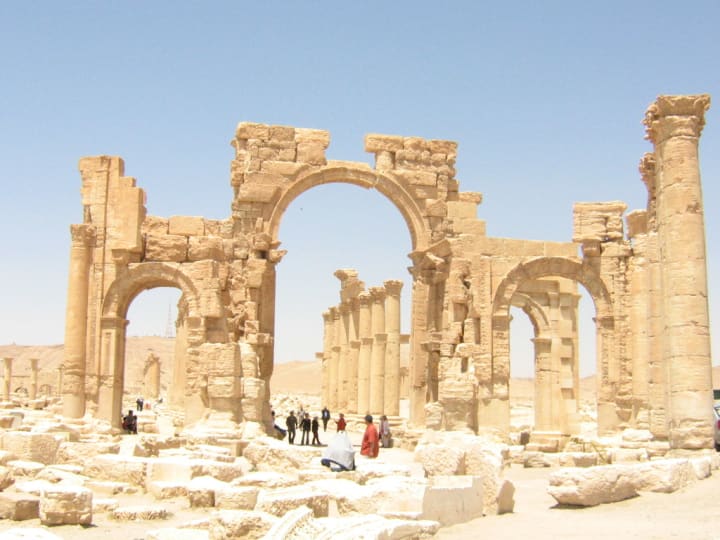
Traditional Crafts:
Damascus has a long history of traditional craftsmanship, particularly in the production of silk textiles, brocade, and damask fabrics. These textiles are highly prized and have been exported to various parts of the world for centuries.
Damascus steel:
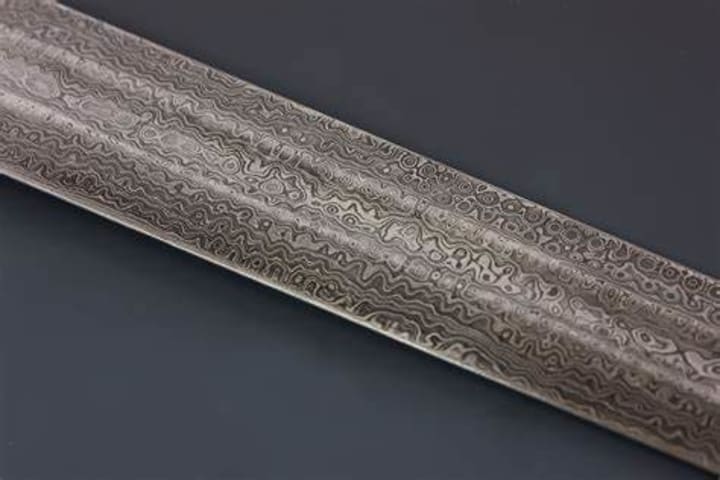
also known as Damascene steel, is a type of steel known for its distinctive wavy or mottled pattern on the surface. It has a long and storied history, and its origins can be traced to the Middle East, particularly to the city of Damascus, which is now in modern-day Syria. Here's some information about Damascus steel, its origins, and how it's made:
**Origin:**
Damascus steel's precise origin is a subject of historical debate, but it is often associated with the Middle East, especially Damascus, in the 3rd and 4th centuries.
**Characteristics:**
Damascus steel is characterized by its distinctive water-like or woodgrain patterns on the surface, often referred to as "pattern-welded" or "pattern-forged" steel. This pattern is a result of alternating layers of two different types of steel. Damascus steel is renowned for its exceptional sharpness, durability, and flexibility, making it a prized material for weapons and blades.
**Manufacturing Process:**
Traditional Damascus steel is made using a process known as pattern welding or pattern forging. Here's a simplified overview of how it's made:
1. Selecting Steel: Two types of steel with different properties are chosen. Typically, one is a high-carbon steel, which can become very hard, and the other is a low-carbon steel, which is more malleable.
2. Layering: The two types of steel are layered together.
3. Forging: The layered steel is heated and hammered to create a single billet or bar of steel. This process is repeated multiple times to create many layers, typically ranging from several dozen to hundreds.
4. Acid Etching: The steel is then etched with acid, which reveals the contrasting layers, creating the distinctive pattern.
5. Heat Treatment: The blade is heat-treated to optimize its hardness and durability.
**Historical Use:**
Damascus steel was traditionally used to make high-quality swords, knives, and other bladed weapons, prized for their sharpness and strength. The swords made from Damascus steel were famous during the Crusades and used by warriors across the Middle East and Asia.
**Decline and Revival:**
The original process for making traditional Damascus steel was lost over time, and the technique for creating the distinctive patterns was forgotten. In recent history, efforts have been made to replicate the process, resulting in modern "Damascus steel" that may not be identical to the ancient variety but still features distinctive patterns and superior blade qualities. It's important to note that there are variations in the process of making Damascus steel, and modern recreations often use different types of steel alloys and techniques to achieve similar visual effects and performance characteristics. True Damascus steel, as it was historically made, remains a subject of historical intrigue and study.
Oldest Capital:
Damascus has served as the capital of numerous empires and dynasties throughout history, including the Umayyad Caliphate, the Seljuks, the Ayyubids, and the Ottoman Empire.
Modern City:
In addition to its rich history, modern Damascus is a bustling metropolis with a diverse population and a vibrant cultural scene. It remains a center of commerce and trade in the region.
Influence on Art and Literature:
The city has inspired countless artists, poets, and writers. Its rich history and enduring charm have made it a muse for creative expression.
Resilience:
Despite experiencing conflicts and challenges in recent years, the people of Damascus have shown remarkable resilience, and efforts have been made to preserve the city's historical and cultural heritage. Damascus continues to be a city of great historical, cultural, and architectural significance, and it remains a captivating place with a deep and multifaceted history.
About the Creator
Enjoyed the story? Support the Creator.
Subscribe for free to receive all their stories in your feed. You could also pledge your support or give them a one-off tip, letting them know you appreciate their work.

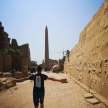




Comments (1)
Your writing skills are truly impressive. I loved it.